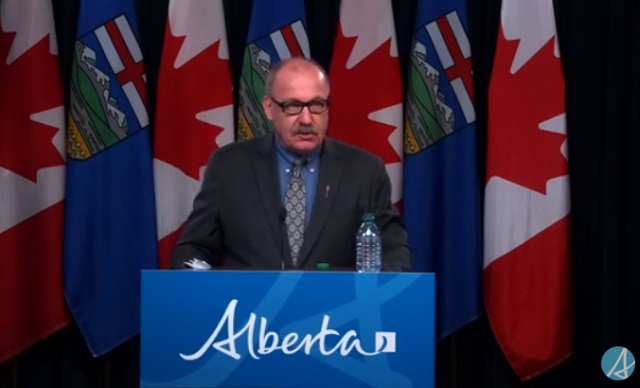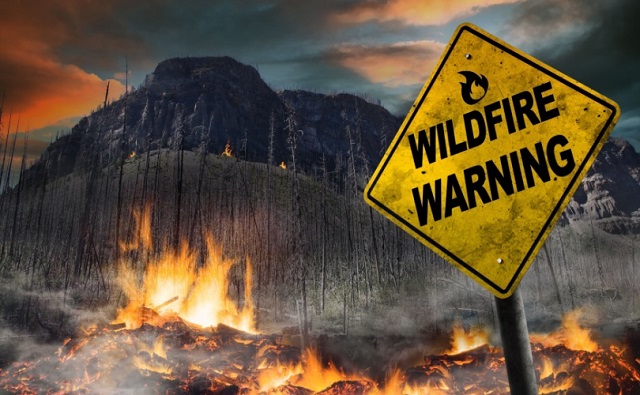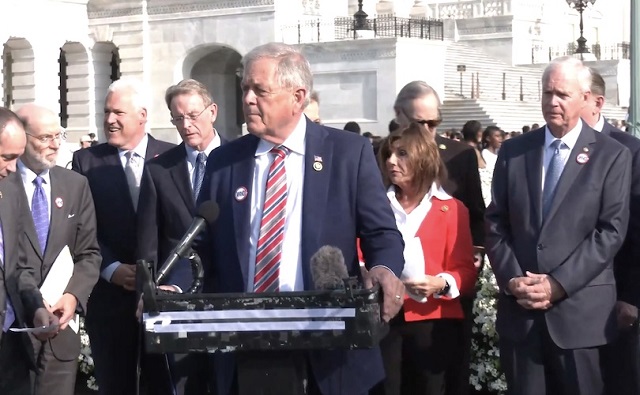Alberta
Open letter to Canada’s Premiers calling for pivot in response, end to lockdowns

Premiers,
It has been over one full year since the declaration of the Pandemic. SARS CoV-2 has been in Canada much longer than that, as you well know.
You are responsible for the response in each of your jurisdictions. While the Medical Officers of Health (MOH) are equally responsible for the advice they have given, you personally were elected to lead. They were not.
Your own statistics prove that for people under the age of 60, SARS CoV-2 is not something to be feared. In one full year, people under the age of 60 are twice as likely to die from a heart disease. For people 20 – 40 years old, they are five times more likely to die in a car accident. Worldwide 2.54 million people die from Pneumonic annually. SARS CoV-2 has killed under 2 Million in a year. The risk from SARS CoV-2 has been widely exaggerated, by you, your MOH and the media.
https://www.frontiersin.org/articles/10.3389/fpubh.2021.625778/full
For people over 60, your approach has failed our seniors.
Canada has ranked last in the Organization of Economically Developed Countries (OECD) in care of those most at risk to SARS CoV-2. Over 96% of all reported SARS CoV-2 deaths were in our seniors. Even Canada’s Chief Medical Officer of Health admitted this is Canada’s shame.
Your use of “lockdowns” did not save over 21,000 of our seniors. It failed them.
The use of Non-Pharmaceutical Interventions (NPIs) which we now call “lockdowns” was known to have little effect on the spread of infectious diseases long before SARS CoV-2 arrived. In fact, the World Health Organization (WHO) assembled the best infectious disease doctors in the world to write the 2019 version of “Non-Pharmaceutical Public Health Measures”. If you read the document, for a Pandemic of the severity of SARS CoV-2, most of these measures were not recommended for use. Yet we used almost all of them.
https://apps.who.int/iris/bitstream/handle/10665/329438/9789241516839-eng.pdf
Top infectious disease doctors in the world have proven in repeated detail peer reviewed research papers all over again that “lockdowns” do not have significant impacts on either the spread or deaths for SARS CoV-2. Yet you and the media constantly tell us they do. But one of the many in depth studies found: “While small benefits cannot be excluded, we do not find significant benefits on case growth of more restrictive NPIs. Similar reductions in case growth may be achievable with less‐restrictive interventions”.
https://onlinelibrary.wiley.com/doi/10.1111/eci.13484
What is also know is that “lockdowns” cause terrible collateral damage. The damage to Canadians Mental Health, Societal Health, Children’s Education and Social Development, Patients with other Severe Illnesses and to our National Economy (Federal and Provincial/Territorial) will continue, until you remove and promise never to inflict “lockdowns again. These impacts and deaths seem not to be considered in any cost benefit analysis by you or your MOH.
Many of the world’s experts have tried to help target the response to SARS CoV-2 to save the most vulnerable, while minimizing the effects on the rest of our population. You have ignored these experts. In fact, most of these experts have been completely censored by you, your MOH and the media.
Please read the attached Paper, “One Year of COVID-19 Pandemic Response in Canada”. The Paper states what we had collectively planned to do in a Pandemic, what we have done, and how to pivot out of our failed response.
It is time to stop.
Listen to all expert voices.
Pivot.
Thank you for your time.
David Redman
Lieutenant Colonel (Retired)
Former Head of Emergency Management Alberta
One Year of COVID-19 Pandemic Response in Canada March 31, 2021
David Redman
Former Head of Emergency Management Alberta
Emergency Management
Pandemics happen continuously. Since 1955, this is the world’s fifth pandemic. In the next fifty-five years there is going to be five more. We have never responded to a pandemic like we responded to COVID-19.
It must be clear that a pandemic is not a Public Health Emergency, it is a Public Emergency because all areas of society are affected: public sector, private sector, not- for-profit sector, and all citizens.
In Canada, we have an Emergency Management Process that we normally use in a pandemic. We have pre-written Pandemic Response plans. These plans were written incorporating the hard lessons learned from previous pandemics.
Part of the lessons learned from previous pandemics is contained in the World Health Organization (WHO) “Non-pharmaceutical public health measures for mitigating the risk and impact of epidemic and pandemic influenza” dated 2019.
https://apps.who.int/iris/bitstream/handle/10665/329438/9789241516839-eng.pdf
This document included the world’s best studies and information on the use of 15 separate non-pharmaceutical interventions (NPIs). The use of these NPIs was discussed in the development of the existing Provincial Plans.
The 2019 WHO document was known, or should have been known, by all Medical Officers of Health in Canada. The use of each of the NPIs was dependant on the severity of the pandemic. Even in a High or Extraordinary Pandemic the use of all or most of these NPIs at the same time was not envisioned.
Prior to the use of each NPI, the Federal and Provincial/Territorial governments needed to demonstrably justify how each NPI would protect the life of Canadians. Some of the NPIs were not recommended for use in any pandemic, including:
- Contact Tracing (not recommended after first two weeks)
- Quarantine of Exposed Individuals
- Entry and Exit Screening
- Border Closures
One Year of COVID-19 Pandemic Response in Canada March 31, 2021
David Redman
Former Head of Emergency Management Alberta
Some of the NPIs were recommended for use only as a last resort, including: • Workplace Measures and Closures
Despite this, they were used as a first resort.
Some NPIs were not recommended for a pandemic with the severity of COVID-19, including:
- School Measures and Closures
- Face Masks for Public These recommendations were ignored.The lack of any attempt to publicly demonstrate a cost benefit analysis based on life and impact on lives shows a complete disregard for “Due Diligence” by both our Medical Officers of Health (MOH) and our Premiers.
In summary on NPIs, the collateral damage from the use of each NPI needed to be justified in a cost benefit analysis, showing not only what life saving could be expected, but what the short-term and long-term impact on lives would be. Further, it needed to be demonstrably shown why the WHO recommendations were ignored. This was never done for any of the NPIs invoked.
The aim of the pre-written pandemic plans is to allow our leaders to rapidly minimize the impact of a new pandemic on our society. The four goals of the pandemic plans are clearly defined:
• Controlling the spread of influenza disease and reducing illness (morbidity) and death (mortality) by providing access to appropriate prevention measures, care, and treatment.
• Mitigating societal disruption in Alberta through ensuring the continuity and recovery of critical services.
• Minimizing adverse economic impact.
• Supporting an efficient and effective use of resources during response and recovery
https://www.alberta.ca/pandemic-influenza.aspx#toc-1
The purpose in writing these plans in advance is to ensure the government could rapidly advise the public of the scope of the new hazard and publicly issue a complete written plan to address it. That way the public can see the entire plan, see the phases of the plan, and all steps that will be taken. The public understands their role in the plan. The response to the pandemic would then be coherent.
This has not happened.
One Year of COVID-19 Pandemic Response in Canada March 31, 2021
David Redman
Former Head of Emergency Management Alberta
The Canadian Response – Not Based on Emergency Management
The Canadian response to COVID-19 has been incoherent, constantly changing, and with no plan. The sole focus on COVID-19 case counts led to a completely flawed response trying to deal only with the first pandemic goal, and failing.
In February and March 2020 we knew that over 95% of the deaths in China and Europe were in seniors, over the age of 60, with multiple co-morbidities.
One Year of COVID-19 Pandemic Response in Canada March 31, 2021
David Redman
Former Head of Emergency Management Alberta
We should have immediately developed options for the protection of concentrations of our seniors over 60 with co-morbidities. Our Long Term Care (LTC) homes should have developed and offered quarantine options, for both the residents and the staff.
In our first full year of COVID-19 in Canada, 96% of our over 22,800 deaths have been in seniors, over the age of 60, with multiple co-morbidities. See Figure 5 in link below, updated weekly by Health Canada.
https://health-infobase.canada.ca/covid-19/epidemiological-summary-covid-19- cases.html
That is over 21,890 deaths. It is likely that thousands of these deaths could have been avoided, as over 80% of the deaths in the first wave occurred in LTC homes.
After one full year, we stand at 73% of the 22,880 deaths in LTC homes, 16,700 of our seniors. Our country ranked last in the OECD for protecting our seniors.
https://www.msn.com/en-ca/news/canada/canadas-nursing-homes-have-worst-record- for-covid-deaths-among-wealthy-nations-report/ar-BB1f76sw
This may have cost $2 billion, but could have saved over 16,700 lives as 73% of Canadian deaths have been in LTC homes in the first year of COVID-19. Instead we locked down healthy Canadians and our businesses and spent well over $240 billion to force over 8 million healthy Canadians to stay at home. The cost mounts daily.
https://www.cbc.ca/news/canada/tracking-unprecedented-federal-coronavirus-spending- 1.5827045
We did not need to follow the failed lock down practice of China or Europe. Lockdowns have not saved 21,890 of our Canadian seniors. We knew who was most at risk and had time to provide the option of quarantine for our seniors, both in LTC homes and in society. Instead, we sacrificed our seniors.
https://www.cnn.com/2020/05/26/world/elderly-care-homes-coronavirus-intl/index.html
In June 2020, the Canadian Institute for Health Information reported that Canada had a higher
proportion of COVID-19 deaths within LTC settings than other OECD countries included in its
comparison. At that time, deaths in Canadian LTCs from COVID-19 were at 81% of the total, while
OECD countries reported LTC COVID-19 deaths of 10-66% (average of 38%) of their totals.
The CBC News analysis has tracked $105.66 billion in federal payments to individuals; $118.37
billion that has gone to businesses, non-profits and charitable organizations; and a further
$16.18 billion in transfers to provinces, territories, municipalities and government agencies.
One Year of COVID-19 Pandemic Response in Canada March 31, 2021
David Redman
Former Head of Emergency Management Alberta
Our leaders and doctors constantly tell us we are in danger of overwhelming our medical system. If we had acted to quarantine our seniors’ long term care facilities, our hospital capacity would not have been challenged, as 71% of our hospital beds and 64% of our ICU capacity continue to this day to be filled with seniors. See Figure 5 in link below, updated daily by Health Canada.
https://health-infobase.canada.ca/covid-19/epidemiological-summary-covid-19- cases.html
We would not have needed to stop other medical procedures.
https://lfpress.com/opinion/columnists/goldstein-canadas-medical-wait-times-longest- ever-because-of-covid-19
We should never have forced healthy medical staff to self-isolate. We should have made rapid testing a priority for all orders of government.
We ignored the other three goals of our pre-existing pandemic plans:
• Mitigating societal disruption in Alberta through ensuring the continuity and recovery of critical services.
• Minimizing adverse economic impact.
• Supporting an efficient and effective use of resources during response and recovery
Ignoring these three goals and following a failed lockdown response has caused massive collateral damage in terms of deaths and long-term effects on our population. Collateral damage, largely ignored by mainstream media, includes but is not limited to:
- Societal health,
- Mental health,
- Other health conditions,
- Children’s education and social development,
- Economic healthhttps://pandemicalternative.org/ https://collateralglobal.org/
We are told that lockdowns (i.e. the persistent use of NPIs) has decreased the spread and deaths from COVID-19. Therefore, it is assumed that the collateral deaths are somehow justified. Nothing could be further from the truth.
One Year of COVID-19 Pandemic Response in Canada March 31, 2021
David Redman
Former Head of Emergency Management Alberta
We knew from the WHO 2019 NPI document cited earlier that the use of most NPIs have little effect on the spread of a virus. It was a lesson learned. Unfortunately, it had to be proved again through studies by some of the best infectious disease doctors in the world. One such study on the spread of COVID-19 is quoted:
“European Journal of Clinical Investigation
Assessing mandatory stay‐at‐home and business closure effects on the spread of
COVID‐19
Methods
We first estimate COVID‐19 case growth in relation to any NPI implementation in subnational regions of 10 countries: England, France, Germany, Iran, Italy, Netherlands, Spain, South Korea, Sweden and the United States. Using first‐difference models with fixed effects, we isolate the effects of mrNPIs by subtracting the combined effects of lrNPIs and epidemic dynamics from all NPIs. We use case growth in Sweden and South Korea, 2 countries that did not implement mandatory stay‐at‐home and business closures, as comparison countries for the other 8 countries (16 total comparisons).
Conclusions
While small benefits cannot be excluded, we do not find significant benefits on case growth of more restrictive NPIs. Similar reductions in case growth may be achievable with less‐restrictive interventions.”
https://onlinelibrary.wiley.com/doi/10.1111/eci.13484
Further comment on deaths from COVID-19 and non-lockdown countries compared to lockdown countries:
https://off-guardian.org/2021/03/23/lockdown-one-year-on-it-doesnt-work-it-never- worked-it-wasnt-supposed-to-work/
COVID-19 has followed the annual seasonal infection curve almost exactly, in spite of lockdowns in our country. Our MOH and Premiers take credit for the seasons when it is in their favour and blame their citizens when seasons dictate “exponential increases”. Our Premiers and MOHs continue to abandon our Emergency Management Process and give in to fear.
One Year of COVID-19 Pandemic Response in Canada March 31, 2021
David Redman
Former Head of Emergency Management Alberta
Conclusions – An Emergency Management and Science Based Way Ahead
Canadians deserve a confidence-based response to the COVID-19 pandemic and all future pandemics. An eight-point process is proposed for the immediate future:
|
1. Releaseacomprehensive,FourGoal-basedPandemicPlan,showingwhatis to be done phase by phase, and what the public’s role is in each phase. |
|
One Year of COVID-19 Pandemic Response in Canada March 31, 2021
David Redman
Former Head of Emergency Management Alberta
7. Geteveryoneunder65withoutpre-existingcompromisedimmune systems, who can and want to work, fully back to work.
8. Continuetovaccinateassafeandeffectivevaccinesbecomeavailable,for the current strain of COVID-19.
Canada’s Response to COVID-19 After One Year
Alberta
Political parties will be part of municipal elections in Edmonton and Calgary pilot projects

Strengthening Alberta’s local elections
Alberta’s government is introducing legislation to ensure Albertans can rely on transparent, free and fair elections, and municipally-elected officials have clearer accountability measures.
In a democratic society, Albertans expect their local elections to be free and fair, and their elected officials to be held to account by clear rules that govern their local councils. The Municipal Affairs Statutes Amendment Act proposes amendments to the Local Authorities Election Act (LAEA) and the Municipal Government Act (MGA) to add greater transparency to local election processes and ensure local councils and elected officials continue to remain accountable to the citizens who elected them.
“Our government is committed to strengthening Albertans’ trust in their local governments and the democratic process that elects local leaders. The changes we are making increase transparency for Alberta voters and provide surety their votes will be counted accurately. We know how important local democracy is to Albertans, and we will work with local authorities to protect and enhance the integrity of local elections.”
Local Authorities Election Act
Albertans expect free and fair elections and that’s why it’s important we strengthen the rules that govern local elections. To strengthen public trust in local elections, Alberta’s government will eliminate the use of electronic tabulators and other automated voting machines. All Albertans should be able to trust the methods and results of local elections; requiring all ballots to be counted by hand, clarifying rules and streamlining processes for scrutineers will provide voters greater assurance in the integrity of the results.
All eligible Albertans should be able to vote in local elections without impediment. Alberta’s government will limit the barriers for eligible voters to cast a ballot by expanding the use of special ballots. Currently, special ballots can only be requested for very specific reasons, including physical disability, absence from the municipality, or for municipal election workers. By expanding the use of special ballots, the government is encouraging more voter participation.
Amendments in the Municipal Affairs Statutes Amendment Act would increase transparency in local elections by enabling political parties at the local level. Political parties would be enabled in a pilot project for Edmonton and Calgary. The act will not require candidates to join a political party in order to run for a local or municipal office, but will create the opportunity to do so.
In addition, proposed changes to the Local Authorities Election Act would allow municipalities the option to require criminal record checks for local candidates, thus increasing transparency and trust in candidates who may go on to become elected officials.
Municipal Government Act
The role of an elected official is one with tremendous responsibility and expectations. Changes proposed to the Municipal Government Act (MGA) will strengthen the accountability of locally elected officials and councils. These include requiring mandatory orientation training for councillors, allowing elected officials to recuse themselves for real or perceived conflicts of interest without third-party review and requiring a councillor’s seat to become vacant upon disqualification.
If passed, the Municipal Affairs Statutes Amendment Act will also unlock new tools to build affordable and attainable housing across Alberta. Proposed amendments under the MGA would also create more options for municipalities to accelerate housing developments in their communities. Options include:
- Exempting non-profit, subsidized affordable housing from both municipal and education property taxes;
- Requiring municipalities to offer digital participation for public hearings about planning and development, and restricting municipalities from holding extra public hearings that are not already required by legislation; and
- Enabling municipalities to offer multi-year residential property tax exemptions.
Municipal Affairs will engage municipalities and other partners over the coming months to hear perspectives and gather feedback to help develop regulations.
Quick facts
- The LAEA establishes the framework for the conduct of elections in Alberta municipalities, school divisions, irrigation districts and Metis Settlements.
- The MGA establishes the rules governing the conduct of local elected officials once on council, as well as the overall administration and operation of municipal authorities in Alberta, including any policy those authorities may wish to implement.
Related information
Alberta
Alberta official reveals ‘almost all’ wildfires in province this year have been started by humans

From LifeSiteNews
Alberta Minister of Forestry and Parks Todd Loewen said his department estimates that most of the province’s wildfires this year are man-made and not caused by ‘climate change.’
Alberta officials have announced that almost all fires in 2024 are believed to have been caused by humans despite ongoing claims that “climate change” is to blame.
On April 24, Alberta Minister of Forestry and Parks Todd Loewen revealed that his department estimates that most of the province’s wildfires this year are man-made and not caused by “climate change” as claimed by mainstream media and politicians.
“We expect that almost all of the wildfires we’ve experienced so far this year are human caused, given the point we’re at in the season and the types of weather we’re seeing,” Loewen stated.
Already, Alberta has put out 172 wildfires this year, and 63 are actively burning. However, Loewen did not seem overly alarmed, instead warning Albertans to watch their local fire bans and restrictions to reduce the high number of man-made wildfires.
“I urge you to assess your property for wildfire danger and take any preventive action you can to address these risks,” he said.
“This includes breaking up fuel sources that could ignite a structure, removing trees in close proximity to your home, and properly maintaining your gutters and roofs to rid the materials that could easily ignite such as leaves and dry needles,” Loewen added.
Loewen’s announcement comes just weeks after Alberta Premier Danielle Smith promised that arsonists who ignite wildfires in Alberta will be held accountable for their crimes.
“As we approach the wildfire season, it is important to understand that 67% of wildfires in Alberta are started by people,” she explained.
“If you start a wildfire, you can be charged, fined, and held liable for all costs associated with fighting the wildfire,” Smith added.
Smith made the comments after last year revealing that most of the wildfires in her province (500 of the 650) were caused by humans and not “climate change,” as has been pushed by the legacy media and opposition politicians.
“All I know is in my province we have 650 fires and 500 of them were human caused,” she said, “so we have to make sure that when people know that when it’s dry out there and we get into forest fire season that they’re being a lot more careful because anytime you end up with an ignition that happens it can have devastating consequences.”
The Alberta government has also created an ad campaign highlighting the fact that most fires are caused by humans and not “climate change,” as many left-leaning politicians claim.
As reported by LifeSiteNews last year, Smith ordered arson investigators to look into why some of the wildfires that raged across the vast expanse of the province had “no known cause” shortly after they spread.
Indeed, despite claims that wildfires have drastically increased due to “climate change,” 2023 research revealed that wildfires have decreased globally while media coverage has spiked 400 percent.
Furthermore, many of the fires last spring and summer were discovered to be caused by arsonists and not “climate change.”
Royal Canadian Mounted Police (RCMP) have arrested arsonists who have been charged with lighting fires across the country, including in the Yukon, British Columbia, and Alberta.
In Quebec, satellite footage also showed the mysterious simultaneous eruption of several blazes across the province, sparking concerns that the fires were a coordinated effort by arsonists.
Despite the overwhelming evidence, Prime Minister Justin Trudeau and mainstream media continue to claim that the fires are unprecedentedly dangerous and caused by “climate change” in an attempt to pass further regulations on natural resources.
The reduction and eventual elimination of the use of so-called “fossil fuels” and a transition to unreliable “green” energy has also been pushed by the World Economic Forum (WEF) – the globalist group behind the socialist “Great Reset” agenda – an organization with which Trudeau and some in his cabinet are involved.
-

 Health1 day ago
Health1 day agoTransgender activists are threatening the author of scathing UK report on child ‘sex changes’
-

 conflict1 day ago
conflict1 day agoCol. Douglas Macgregor torches Trump over support for bill funding wars in Ukraine and Israel
-

 Frontier Centre for Public Policy1 day ago
Frontier Centre for Public Policy1 day agoThe end of Canada: The shift from democracy to totalitarian behavior in the ‘pandemic era’
-

 COVID-192 days ago
COVID-192 days agoInquiry shows Canadian gov’t agencies have spent $10 million on social media ads for COVID jabs
-

 Alberta1 day ago
Alberta1 day agoAlberta’s baby name superstar steals the show again
-

 Business10 hours ago
Business10 hours agoDon’t be fooled by high-speed rail
-

 Alberta9 hours ago
Alberta9 hours agoActivity-Based Hospital Funding in Alberta: Insights from Quebec and Australia
-

 Business7 hours ago
Business7 hours agoUN plastics plans are unscientific and unrealistic





